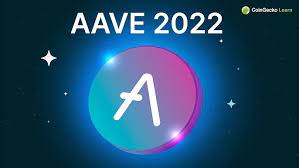AAVE (African American Vernacular English), also known as Black English or Ebonics, is a variety of English spoken primarily by African Americans. It has a rich history, deeply rooted in the experiences and cultural heritage of Black communities in the United States. Over the years, aave has gained recognition both as a legitimate linguistic system and as a key part of Black identity, influencing American culture and even shaping mainstream language.
AAVE’s Linguistic Features
AAVE is a distinct dialect with unique phonological, grammatical, and lexical features. While it shares much with standard American English (SAE), it also contains specific rules and patterns that make it a separate variety of English. Some of the key features of AAVE include:
- Phonology (Sounds): In AAVE, certain sounds are pronounced differently. For example, the consonant cluster “th” is often pronounced as “d” or “t” (e.g., “this” becomes “dis” and “think” becomes “tink”).
- Grammar: One of the most well-known grammatical features of AAVE is zero copula (omitting the verb “to be”). For example, “He is tall” in SAE might become “He tall” in AAVE.
- Tense and Aspect: AAVE uses specific markers to indicate tense or aspect. For example, “He been gone” means “He has been gone for some time,” and “He be working” means “He regularly works” (habitual action).
- Vocabulary: AAVE has contributed numerous words and phrases to the broader American lexicon, such as “lit” (meaning exciting or excellent), “woke” (socially aware or conscious), and “flex” (to show off or boast).
These features are often misinterpreted as “incorrect” or “slang” by speakers of standard English, but linguists argue that AAVE is a legitimate and fully functional dialect, with its own rules and structure.
The Historical Roots of AAVE
The origins of AAVE can be traced back to the time of slavery in the United States. African slaves, primarily from different linguistic backgrounds, were forced to communicate with each other and with their enslavers, often under duress and in a system that limited their access to formal education. This led to the development of a unique blend of African languages and English, influenced by both African linguistic patterns and the limited English proficiency of the enslaved population.
Over time, AAVE evolved, incorporating aspects of Southern American English, the speech patterns of urban communities, and the cultural expressions of the Black community. As African Americans fought for civil rights and gained prominence in various fields, AAVE continued to evolve, reflecting changes in culture, technology, and social movements.
AAVE in Popular Culture
In the late 20th and early 21st centuries, AAVE’s influence has expanded beyond Black communities and become a significant part of mainstream American culture. The language of hip-hop, rap, and R&B music, with artists such as Tupac Shakur, Beyoncé, and Kendrick Lamar, has played a key role in spreading AAVE globally. Expressions such as “YOLO” (You Only Live Once), “lit,” “fam,” and “savage” were popularized through music and social media platforms.
AAVE also permeates television, movies, and online content. Characters in TV shows like The Fresh Prince of Bel-Air and Blackish often speak AAVE, helping bring attention to the dialect and making it more widely recognized. At the same time, AAVE has been appropriated and commodified by non-Black individuals and brands, sometimes stripping it of its cultural significance and context.
AAVE and Linguistic Identity
For African Americans, AAVE serves as a form of linguistic and cultural identity. It is a way to express pride in Black heritage and to establish a sense of community. In many Black neighborhoods, speaking AAVE can indicate solidarity and belonging, while in mainstream settings, it can sometimes be stigmatized as “uneducated” or “incorrect.”
The use of AAVE in education and professional settings is a topic of ongoing debate. Critics argue that AAVE speakers are often penalized for not adhering to standard English, which can affect their academic performance and job prospects. On the other hand, linguists and educators advocate for recognizing AAVE as a legitimate dialect, emphasizing that students should not have to abandon their native language for success in academic settings.
The Cultural and Political Significance of AAVE
AAVE is not only a dialect but also a symbol of resistance and resilience. It represents the history of African Americans who, despite the oppression they faced, have maintained their linguistic and cultural traditions. Language has always been a tool of empowerment, and AAVE is no exception. By continuing to speak and celebrate AAVE, African Americans affirm their cultural heritage and assert their identity in a society that often marginalizes them.
At the same time, AAVE is a point of cultural negotiation. As non-Black people begin to use AAVE more frequently, especially on social media, it raises important questions about cultural appropriation. When individuals from outside the Black community use AAVE without understanding its roots or context, they can inadvertently perpetuate stereotypes or commodify a dialect that holds deep significance for its speakers.
Conclusion
AAVE is more than just a dialect of English—it’s a vital expression of culture, history, and identity. Its evolution reflects the resilience of African American communities, and its widespread influence on American pop culture shows how language can bridge gaps between communities. As we continue to recognize AAVE as a legitimate linguistic system, it’s important to approach it with respect and understanding, appreciating its role in shaping the fabric of American society. The use of AAVE is not just a linguistic choice but an assertion of culture and history, a testament to the enduring legacy of African American contributions to the United States and beyond.

